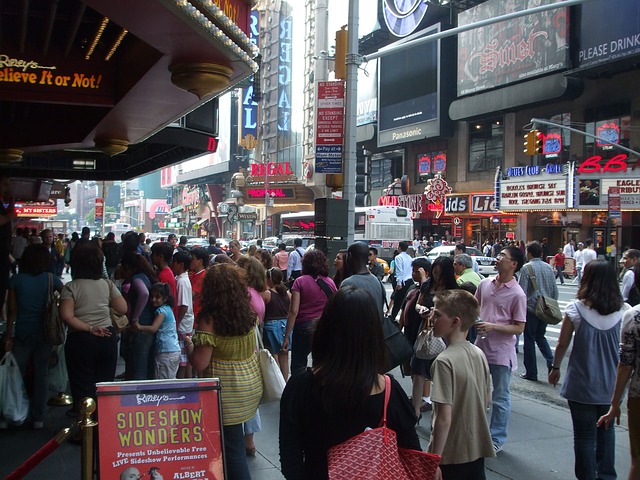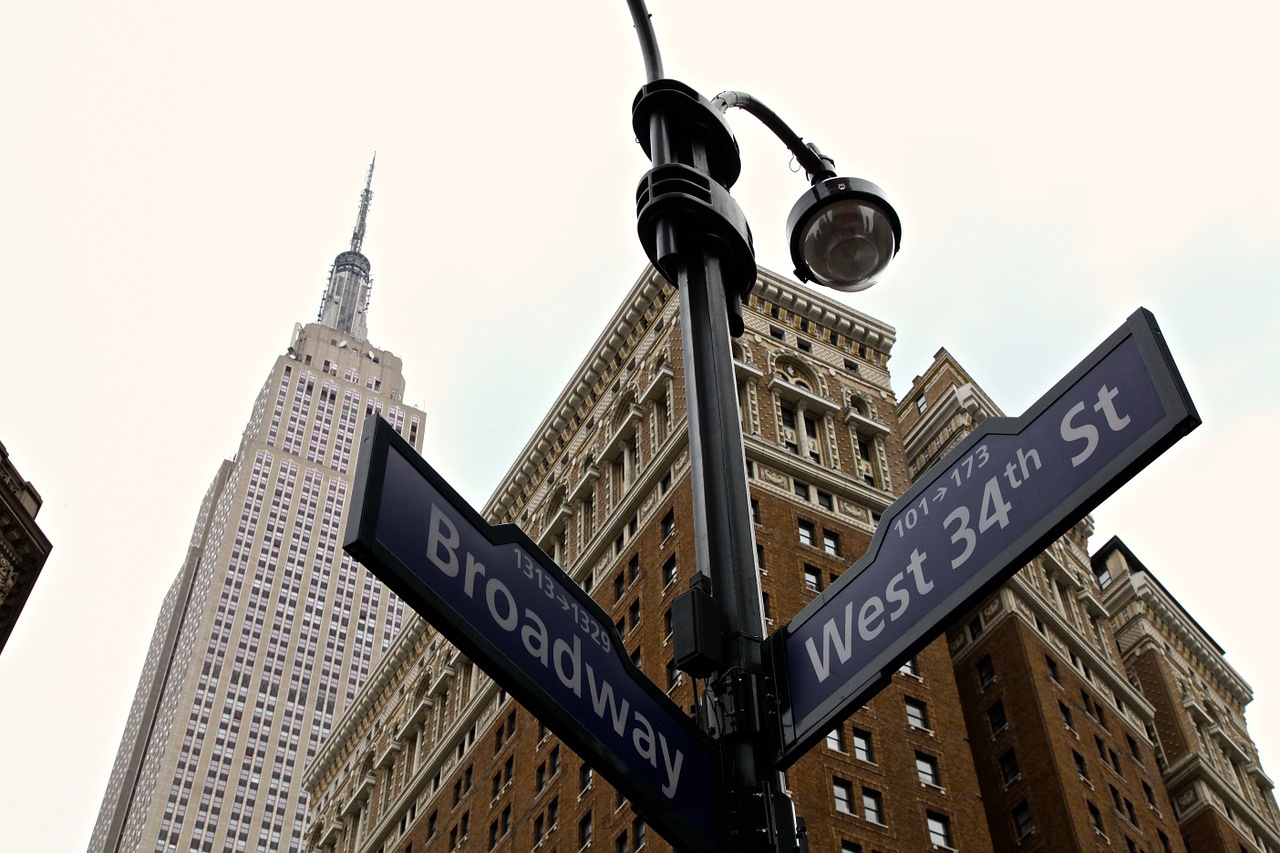The dozens of theaters on Broadway in New York City offer dramas, comedies, and musicals to suit the rich variety of contemporary audience tastes. And while Broadway has been shaped by the history and character of New York City, it has, in turn, helped to form the city’s character.
Starting out small
For all its current sophistication, Broadway’s roots trace back almost 300 years to a 280-seat venue on Nassau Street in Lower Manhattan. In 1750 Thomas Kean and Walter Murray managed the building, simply called the Theatre, where a resident company of performers put on shows that consisted largely of the works of William Shakespeare and ballad operas such as John Gay’s The Beggar’s Opera.
During this time, New York was far from being the center of the theatrical world. Traveling companies of players—some quite prestigious—performed in other cities as well in mid-18th century America.
For example, a company of British actors was sent to the colonies in 1752 by the well-known theater manager William Hallam. Hallam’s players originally set up a theater in Williamsburg in Virginia, where they performed a farce called The Anatomist and Shakespeare’s The Merchant of Venice. But by 1753, Hallam’s players had relocated to New York. There they put on ballad operas and farces in ballad form.
Revolutionary hiatus
During the Revolutionary War, New York’s theaters were shut down, but they reopened their doors in 1798. That was the year of the construction of the 2,000-seat Park Theatre on Chatham Street, an area since renamed “Park Row.”
The 19th century – A flourishing of Shakespeare
In 1826 the Bowery Theatre opened on the Lower East Side, marking the beginning of New York’s first real theater district. The Bowery was the first of many theaters that got their start during the pre-Civil War period. The part of Midtown that is today the New York Theater District was then largely farmland, with ownership concentrated in the hands of a few notable families.
Meanwhile, the works of Shakespeare continued to dominate the American stage through the mid-1800s.
Raising the curtain on Broadway
In 1836 Mayor Cornelius Van Wyck Lawrence, hoping to expand the city’s boundaries, invited New Yorkers to move north of the crowded settlement in the lower part of Manhattan, opening up 42nd Street for new construction. The lure of cheaper real estate proved irresistible, and the area developed rapidly.

A founding theatrical dynasty
In 1899 theater magnate Oscar Hammerstein I (grandfather of Oscar Hammerstein II, the composer who worked with lyricist Richard Rodgers on The Sound of Music and other classics) opened his opulent, 1,000-seat Victoria Theatre on the corner of Broadway and West 42nd Street.
Hammerstein’s innovative space even offered theatergoers the chance to enjoy the Paradise Roof Garden. Today, the Art Deco-era Rialto movie theater stands at the site.
Infrastructure development spurs theater development
At the turn of the century, the future Times Square was known as Longacre Square and served as the location for a variety of vaudeville and burlesque performances.
Beginning in 1904, the growth of New York’s subway system spurred a boom in the neighborhood’s development, securing its niche as the city’s major location for theater. At the same time, the construction of the new home of the New York Times gave the nearby square its new name and fixed its identity in the popular imagination.
In addition, newly developed electric-powered trolley cars made transportation to the fledgling Theater District easier.
A luxe venue encapsulates an era
The Winter Garden Theatre, converted from a dilapidated horse exchange by architect William Albert Swasey, was one of the biggest names in early 20th-century Broadway. It opened for business in 1911 and was managed by legendary theater entrepreneurs Jacob and Lee Shubert.
Ignoring then-current conventional wisdom that building a theater north of 42nd Street was madness, the brothers brought their concept of a “winter garden”—a building offering a series of conservatories awash with greenery, even in winter—to life in a theater that was state-of-the-art for its time. Its major architectural innovation was to provide a larger number of comfortable seats much closer to the stage.
The vast width of the stage rested under a network of floral-themed twining latticework and a richly sky-blue decorated ceiling.
The Winter Garden’s opening program featured one of Jerome Kern’s early works in a three-part show starring wildly popular performer Al Jolson, among dozens of marquee names. In the years since, it has been the location for numerous legendary premieres, including the 1971 debut of Stephen Sondheim’s Follies.
Vaudeville and names in lights
The Palace Theater, located on Broadway and 47th Street, opened in 1913 and soon became the epitome of the grand-scale vaudeville entertainment center.
Meanwhile, the build-out of Manhattan’s electrical grid gave theaters the opportunity to advertise themselves in bold, glittering colors and swaths of white light, giving rise to the nickname “The Great White Way.”
The end of an era . . . and the beginning of another
During the Great Depression, theater-going dwindled with the hard economic times. A number of theaters closed their doors forever, and out-of-work stage actors changed coasts to try their luck in Hollywood.
But the 1930s and the years of World War II also brought social progress and innovation to Broadway. Shows like Porgy and Bess, George Gershwin’s distinctly American opera that premiered on Broadway at the Alvin Theatre in 1935, put African American casts and themes center stage for the first time.
And Oklahoma!, the 1943 Rodgers and Hammerstein sensation, helped usher in what is now considered the Golden Age of Broadway. Agnes DeMille presented a new way of doing choreography: a fluid, graceful, relatable style, unlike the over-the-top-extravagant numbers that opened Broadway musicals at the time.
This musical with a simple story debuted at the St. James Theatre, offering lyricism, hope, and heartfelt truths to audiences living through dark and dangerous times, and became so beloved that it ran for close to five years and more than 2,000 performances.

